Category: Recommended Reading
The Sheer Love and Joy of Alice Neel’s Pet Portraits
Elaine Velie at Hyperallergic:
 For six decades, Alice Neel rendered intimate depictions of strangers, lovers, and friends, capturing fleeting moments, moods, and personalities in her beloved expressionistic paintings. Now through October, visitors to the Orange County Museum of Art (OCMA) can become acquainted with a lesser-known subject of Neel’s paintings: pets. Amidst a total of 40 works, Alice Neel: Feels Like Home showcases five paintings of cats, dogs, and one parrot, all of which Neel portrayed with her characteristic familiarity and attention to individuality.
For six decades, Alice Neel rendered intimate depictions of strangers, lovers, and friends, capturing fleeting moments, moods, and personalities in her beloved expressionistic paintings. Now through October, visitors to the Orange County Museum of Art (OCMA) can become acquainted with a lesser-known subject of Neel’s paintings: pets. Amidst a total of 40 works, Alice Neel: Feels Like Home showcases five paintings of cats, dogs, and one parrot, all of which Neel portrayed with her characteristic familiarity and attention to individuality.
“It’s something that really struck me when I started doing more research and looking at the work,” OCMA’s Chief Curator Courtenay Finn told Hyperallergic. “They are characters and personalities in their own right along with the people, which I think is kind of incredible.”
more here.
Alice Neel’s Classic Carson Appearance
Overload, Dizziness, Vertigo, Trance
Stephen Piccarella at n+1:
 THE PURPOSE OF VESTIBULAR THERAPY is to induce symptoms of dizziness so that the brain becomes accustomed to accommodating them until they subside or are no longer noticeable. It’s a kind of physical therapy designed to train and improve the functioning of the vestibular system —the inner ear—which determines a body’s balance and stable position in space. Dysfunction of the vestibular system can result in a range of complications, from vertigo to ataxia to double vision. I’m currently receiving treatment for convergence insufficiency, a slight misalignment or tendency to turn outward of one eye (my left), and Persistent Postural Perceptual Dizziness, a chronic “non-spinning” dizziness that causes disorientation and foggy thinking without necessarily impeding physical balance. My symptoms are constant, but interfere mostly with visual processing—usually when I’m reading, particularly on a screen, or when I’m in a busy public place.
THE PURPOSE OF VESTIBULAR THERAPY is to induce symptoms of dizziness so that the brain becomes accustomed to accommodating them until they subside or are no longer noticeable. It’s a kind of physical therapy designed to train and improve the functioning of the vestibular system —the inner ear—which determines a body’s balance and stable position in space. Dysfunction of the vestibular system can result in a range of complications, from vertigo to ataxia to double vision. I’m currently receiving treatment for convergence insufficiency, a slight misalignment or tendency to turn outward of one eye (my left), and Persistent Postural Perceptual Dizziness, a chronic “non-spinning” dizziness that causes disorientation and foggy thinking without necessarily impeding physical balance. My symptoms are constant, but interfere mostly with visual processing—usually when I’m reading, particularly on a screen, or when I’m in a busy public place.
Eliciting these diagnoses turned out to be far from easy. That surprised me, but not anyone I know who deals with doctors on a regular basis.
more here.
Why scientists haven’t cracked consciousness
Oshan Jarow in Vox:
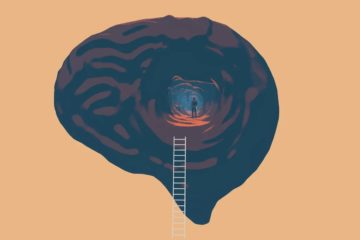 In 1998, at the conference of the Association for the Scientific Study of Consciousness (ASSC), the neuroscientist Christof Koch made a bet with the philosopher David Chalmers: by 2023, science would be able to explain how the brain’s tangle of neurons gives rise to the phenomenon we call consciousness. The winner would get a case of wine. Koch was a professor of cognitive biology who helped pioneer the mechanistic study of the “neural correlates of consciousness,” which maps the relationship between brain activity and subjective experiences. He believed that consciousness was fundamentally measurable and that it was only a matter of time before science identified how it arose in the brain.
In 1998, at the conference of the Association for the Scientific Study of Consciousness (ASSC), the neuroscientist Christof Koch made a bet with the philosopher David Chalmers: by 2023, science would be able to explain how the brain’s tangle of neurons gives rise to the phenomenon we call consciousness. The winner would get a case of wine. Koch was a professor of cognitive biology who helped pioneer the mechanistic study of the “neural correlates of consciousness,” which maps the relationship between brain activity and subjective experiences. He believed that consciousness was fundamentally measurable and that it was only a matter of time before science identified how it arose in the brain.
Chalmers was both a philosopher and cognitive scientist who was skeptical that science would be able to build explanatory bridges between neural correlates in the brain and the subjective experience of consciousness. Famously, he called consciousness “the hard problem,” which he believed was sufficiently challenging to keep any explanation of consciousness at bay for at least a quarter of a century. At the 26th ASSC conference this past weekend, 25 years after the initial wager, the results were declared: Koch lost. Despite years of scientific effort — a time during which the science of consciousness shifted from the fringe to a mainstream, reputable, even exciting area of study — we still can’t say how or why the experience of consciousness arises.
Galileo split consciousness away from science 400 years ago
While the Western science of consciousness only grew into a reputable field over the past few decades, part of the reason answers remain so elusive may be buried in the deep structure of scientific inquiry itself, reaching back to the 1600s.
More here.
To Help Cool a Hot Planet, the Whitest of White Coats
Cara Buckley in The New York Times:
 Xiulin Ruan, a professor of mechanical engineering at Purdue University, didn’t set out to make it into the Guinness World Records when he began trying to make a new type of paint. He had a loftier goal: to cool down buildings without torching the Earth.
Xiulin Ruan, a professor of mechanical engineering at Purdue University, didn’t set out to make it into the Guinness World Records when he began trying to make a new type of paint. He had a loftier goal: to cool down buildings without torching the Earth.
In 2020, Dr. Ruan and his team unveiled their creation: a type of white paint that can act as a reflector, bouncing 95 percent of the sun’s rays away from the Earth’s surface, up through the atmosphere and into deep space. A few months later, they announced an even more potent formulation that increased sunlight reflection to 98 percent. The paint’s properties are almost superheroic. It can make surfaces as much as eight degrees Fahrenheit cooler than ambient air temperatures at midday, and up to 19 degrees cooler at night, reducing temperatures inside buildings and decreasing air-conditioning needs by as much as 40 percent. It is cool to the touch, even under a blazing sun, Dr. Ruan said. Unlike air-conditioners, the paint doesn’t need any energy to work, and it doesn’t warm the outside air.
In 2021, Guinness declared it the whitest paint ever, and it’s since collected several awards. While the paint was originally envisioned for rooftops, manufacturers of clothes, shoes, cars, trucks and even spacecraft have come clamoring. Last year, Dr. Ruan and his team announced that they’d come up with a more lightweight version that could reflect heat from vehicles.
More here.
Wednesday, July 12, 2023
Robert Oppenheimer Speaking At UCLA (1964)
The Good Witches Of Pennsylvania
Rachel Yoder at Harper’s Magazine:
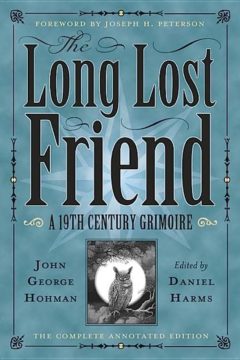 What the old Amish woman named Rachel Smoker and others like her practice is called, depending on whom you ask, powwow or Braucherei or pulling pain or active prayer or witchcraft or folk-cultural religious ritual, though Rachel Smoker would never call it any of these things. She prefers “natural healing” and “reflexology.”
What the old Amish woman named Rachel Smoker and others like her practice is called, depending on whom you ask, powwow or Braucherei or pulling pain or active prayer or witchcraft or folk-cultural religious ritual, though Rachel Smoker would never call it any of these things. She prefers “natural healing” and “reflexology.”
I came to find her because of a book of spells. And I sought out this book because it seemed to me one of the more compelling corners of my Amish and Mennonite heritage, though it had never once been mentioned to me growing up. The book—The Long Lost Friend: A Collection of Mysterious and Invaluable Arts and Remedies, also called the “Famous Witchbook of the Pennsylvania Dutch”—was compiled in the early nineteenth century by John George Hohman, a German-speaking immigrant.
more here.
‘Kairos’ By Jenny Erpenbeck
Kevin Power at Literary Review:
 How is a totalitarian state like a love affair? They both leave archives behind when they go. How is a totalitarian state like a bad love affair? The archive that survives the end of each is a monument to abuse, surveillance and betrayal.
How is a totalitarian state like a love affair? They both leave archives behind when they go. How is a totalitarian state like a bad love affair? The archive that survives the end of each is a monument to abuse, surveillance and betrayal.
This equivalence is indirectly evoked in the opening pages of Jenny Erpenbeck’s fourth novel, Kairos. The totalitarian state in question is the German Democratic Republic, whose Ministry for State Security (or Stasi) generated, in its forty years of existence, ‘the equivalent of all records in German history since the middle ages’ (this factoid comes courtesy not of Erpenbeck but of Anna Funder’s semi-elegiac 2003 portrait of GDR life, Stasiland).
The love affair at the centre of Kairos is that of Hans and Katharina.
more here.
Milan Kundera: The Nobel Prize for Literature Winner We Never Had
Robin Ashenden in Quillette:
 For a long time before his death this week at the age of 94, the novelist Milan Kundera seemed to have fallen out of fashion with critics. Jonathan Coe wrote of his “problematic sexual politics” with their “ripples of disquiet.” Alex Preston complained about the “adolescent and posturing” flavour of the books which had thrilled him in his youth, adding of Kundera’s later novels that reading them was an “increasingly laboured process of digging out the occasional gems from the abstraction and tub-thumping philosophising… a series of retreats into mere cleverness.” Diane Johnson of the New York Times seemed to ring the death knell loudest: “what he has to tell us seems to have less relevance… the world has run beyond some of the concerns that still preoccupy him.”
For a long time before his death this week at the age of 94, the novelist Milan Kundera seemed to have fallen out of fashion with critics. Jonathan Coe wrote of his “problematic sexual politics” with their “ripples of disquiet.” Alex Preston complained about the “adolescent and posturing” flavour of the books which had thrilled him in his youth, adding of Kundera’s later novels that reading them was an “increasingly laboured process of digging out the occasional gems from the abstraction and tub-thumping philosophising… a series of retreats into mere cleverness.” Diane Johnson of the New York Times seemed to ring the death knell loudest: “what he has to tell us seems to have less relevance… the world has run beyond some of the concerns that still preoccupy him.”
Doubtless Kundera’s light had dimmed in the last few decades. No substantial novel had come from him since Immortality (1990), just before he switched from writing in Czech to French. Yet these critics’ withdrawal of support seemed modish, ironic, and not without schadenfreude.
More here.
The Plight of Whales and Our Responsibility
Leon Vlieger in The Inquisitive Biologist:
 We Are All Whalers is veterinary scientist Michael J. Moore’s account of a life spent studying different whale species and what is killing them. He argues that anyone participating in our global economy has blood on their hands, often without realising it. Readers are warned that this book does not avoid graphic details. His research has ultimately drawn him to the problems of whales getting entangled in fishing gear and being struck by ships. However, it is the path that took him there, through both industrial and subsistence whaling, that might leave some readers more upset.
We Are All Whalers is veterinary scientist Michael J. Moore’s account of a life spent studying different whale species and what is killing them. He argues that anyone participating in our global economy has blood on their hands, often without realising it. Readers are warned that this book does not avoid graphic details. His research has ultimately drawn him to the problems of whales getting entangled in fishing gear and being struck by ships. However, it is the path that took him there, through both industrial and subsistence whaling, that might leave some readers more upset.
More here.
AI revolution puts skilled jobs at highest risk, OECD says
Dan Milmo in The Guardian:
 Major economies are on the “cusp of an AI revolution” that could trigger job losses in skilled professions such as law, medicine and finance, according to an influential international organisation.
Major economies are on the “cusp of an AI revolution” that could trigger job losses in skilled professions such as law, medicine and finance, according to an influential international organisation.
The Organisation for Economic Co-operation and Development (OECD) said the occupations at highest risk from AI-driven automation were highly skilled jobs and represented about 27% of employment across its 38 member countries, which include the UK, Japan, Germany, the US, Australia and Canada.
The body said it was “clear that the potential for [AI-driven jobs] substitution remains significant, raising fears of decreasing wages and job losses”.
More here.
Nobel Laureate Jennifer Doudna: How CRISPR lets us edit our DNA
Thursday Poem
“You can’t write poems about the trees when the woods are full of policemen.”
…………………………………………………………………………………… —Bertolt Brecht
Broken Ghazal for Walter Scott
A video looping like a dirge on repeat, my soul—a psalm of bullets in my back.
I see you running, then drop, heavy hunted like prey with eight shots in the back.
Again, in my Facebook feed another black man dead, another fist in my throat.
You: prostrate on the green grass, handcuffed with your hands tied to your back.
Praises for the video, to the witness & his recording thumb, praises to YouTube
for taking the blindfold off Lady Justice, dipping her scales down with old weight
of strange fruit, to American eyeballs blinking & chewing the 24-hour news cycle:
another black body, another white cop. But let us go back to the broken tail light,
let’s find a man behind on his child support, let’s become his children, let’s call him
Papa. Let us chant Papa don’t run! Stay, stay back! Stay here with us. But Tiana—
you have got to stop watching this video. Walter is gone & he is not your daddy,
another story will come to your feed, stay back. But whisper—stay, once more,
with the denied breath of his absent CPR, praise his mother strumming Santana
with tiny hallelujahs up & down the harp of his back. Praise his mother hugging
the man who made her son a viral hit, a rerun to watch him die ad infintum, again
we go back, click replay at any moment. A video looping like a dirge on repeat—
by Tianna Clark
from I Can’t Talk About the Trees Without the Blood
University of Pittsburgh Press, 2018
Milan Kundera: The Unbearable Lightness of Being author dies aged 94
Lea and Cain in The Guardian:
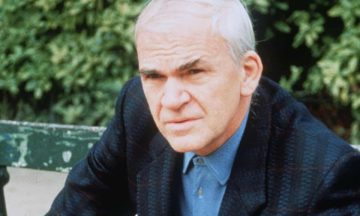 Czech writer Milan Kundera, who explored being and betrayal over half a century in poems, plays, essays and novels including The Unbearable Lightness of Being, has died aged 94 after a prolonged illness, Anna Mrazova, spokeswoman for the Milan Kundera Library, has confirmed.
Czech writer Milan Kundera, who explored being and betrayal over half a century in poems, plays, essays and novels including The Unbearable Lightness of Being, has died aged 94 after a prolonged illness, Anna Mrazova, spokeswoman for the Milan Kundera Library, has confirmed.
Famously leaving his homeland for France in 1975 after earlier being expelled from the Czechoslovakian Communist party for “anti-communist activities”, Kundera spent 40 years living in exile in Paris after his Czech citizenship was revoked in 1979. There he wrote his most famous works, including Nesnesitelná lehkost bytí (The Unbearable Lightness of Being) and later left behind his mother tongue to write novels in French, beginning with 1995’s La Lenteur (Slowness) and his final novel, 2014’s The Festival of Insignificance. He was often cited as a contender for the Nobel prize in literature.
More here.
How to raise kids in the face of climate change
Sean Illing in Vox:
 There are a handful of topics that I almost force myself to not think about because the thoughts lead to a dead end. At the top of that list is climate change. It’s one of those problems that starts to overwhelm me when I consider the scale and the implications and all the barriers to tackling it.
There are a handful of topics that I almost force myself to not think about because the thoughts lead to a dead end. At the top of that list is climate change. It’s one of those problems that starts to overwhelm me when I consider the scale and the implications and all the barriers to tackling it.
I also know I can’t ignore it, because it’s real and it’s getting more urgent. In fact, the average temperature was as hot as it’s ever been, or at least as hot as we’ve ever recorded it to be, several days already this month. And if you live in the northeast United States, you’ve probably noticed the smoke blanket looming over you in recent weeks thanks to wildfires in Canada.
The question a lot of us have asked ourselves at various points is: What is my responsibility in this situation? What can I, as an individual, do?
There isn’t an easy answer here, in part because the problem is too big for any one of us to solve. But if you’re a parent — as I am — the climate predicament takes on an additional dimension. You have to wonder not just about the ethics of raising children in an unstable world. You also have to decide, in a very concrete way, what you really value and whether or not you’re willing to live in accordance with those values.
More here.
Tuesday, July 11, 2023
Elite colleges are machines for laundering privilege
Scott Alexander in Astral Codex Ten:
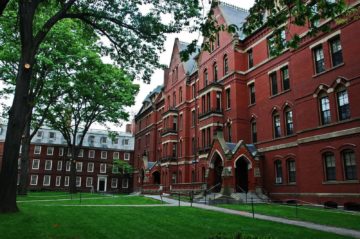 The Maharaja of Whereverstan sends his daughter to Harvard so that she appears meritorious. In exchange, Harvard gets the credibility boost of being the place the Maharaja of Whereverstan sent his daughter. And Harvard’s other students get the advantage of networking with the Princess Of Whereverstan. Twenty years later, when one of them is an oil executive and Whereverstan is handing out oil contracts, she puts in a word with her old college buddy the Princess and gets the deal. It’s obvious what the oil executive has gotten out of this, but what does the Princess get? I think she gets the right to say she went to Harvard, an honor which is known to go mostly to the meritorious.
The Maharaja of Whereverstan sends his daughter to Harvard so that she appears meritorious. In exchange, Harvard gets the credibility boost of being the place the Maharaja of Whereverstan sent his daughter. And Harvard’s other students get the advantage of networking with the Princess Of Whereverstan. Twenty years later, when one of them is an oil executive and Whereverstan is handing out oil contracts, she puts in a word with her old college buddy the Princess and gets the deal. It’s obvious what the oil executive has gotten out of this, but what does the Princess get? I think she gets the right to say she went to Harvard, an honor which is known to go mostly to the meritorious.
People ask why Harvard admissions can still be bribed or influenced by the rich or well-connected. This is the wrong question: the right question is why they ever give spots based on merit at all. The answer is: otherwise the scheme wouldn’t work. The point of a money-laundering operation is to take in both fairly-earned and dirty money, then mix them together so thoroughly that nobody can tell which is which. Likewise, the point of a privilege-laundering operation is to take in both fairly-earned and dirty privilege, then stamp both with a Harvard degree.
More here.
The internet’s “town square” is dead
Eric Hoel in The Intrinsic Perspective:
 In hindsight it seems inevitable: a single overarching internet is impossible. The worldviews of people are too fundamentally incompatible at their roots. Or to simplify and put it more bluntly: at least in the United States, there is no way to fit both major political parties onto the same platform and allow them to wield equal power over a perfectly centered Overton window. Blame whichever side you want, red or blue. I’m sure it’s the other side that’s more extreme (and hey, maybe you’re right). But if Twitter was supposed to be the “global town square,” I think Zuckerberg’s so-far successful introduction of its competitor, Threads, which rapidly feels like the other global town square, presages one of the last gasps of the united internet, and the end of an important, if uncomfortable, era. Yes, it was an era of half a billion people crammed into a single echoing room, all our faces smooshed against one another, and all you could taste was the spittle and there was ringing in your ears as the crowd surged. But it was also the time when you could say something and, just occasionally, the entire world would hear it.
In hindsight it seems inevitable: a single overarching internet is impossible. The worldviews of people are too fundamentally incompatible at their roots. Or to simplify and put it more bluntly: at least in the United States, there is no way to fit both major political parties onto the same platform and allow them to wield equal power over a perfectly centered Overton window. Blame whichever side you want, red or blue. I’m sure it’s the other side that’s more extreme (and hey, maybe you’re right). But if Twitter was supposed to be the “global town square,” I think Zuckerberg’s so-far successful introduction of its competitor, Threads, which rapidly feels like the other global town square, presages one of the last gasps of the united internet, and the end of an important, if uncomfortable, era. Yes, it was an era of half a billion people crammed into a single echoing room, all our faces smooshed against one another, and all you could taste was the spittle and there was ringing in your ears as the crowd surged. But it was also the time when you could say something and, just occasionally, the entire world would hear it.
More here.
Chris Hedges: ‘Twitter Files’ Matt Taibbi says FBI, IRS are targeting him
Noam Chomsky on Language, Left Libertarianism, and Progress
Tyler Cowen at Conversations with Tyler:
COWEN: If I think of your thought, and I compare it to the thought of Wilhelm von Humboldt, what’s the common ontological element in both of your thoughts that leads you to more or less agree on both language and liberty?
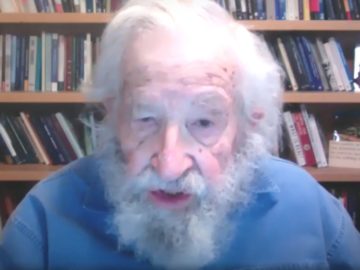 CHOMSKY: Von Humboldt was, first of all, a great linguist who recognized some fundamental principles of language which were rare at the time and are only beginning to be understood. But in the social and political domain, he was not only the founder of the modern research university, but also one of the founders of classical liberalism.
CHOMSKY: Von Humboldt was, first of all, a great linguist who recognized some fundamental principles of language which were rare at the time and are only beginning to be understood. But in the social and political domain, he was not only the founder of the modern research university, but also one of the founders of classical liberalism.
His fundamental principle — as he said, it’s actually an epigram for John Stuart Mill’s On Liberty — is that the fundamental right of every person is to be free from external illegitimate constraints, free to inquire, to create, to pursue their own interests and concerns without arbitrary authority of any sort restricting or limiting them.
COWEN: Now, you’ve argued that Humboldt was a Platonist of some kind, that he viewed learning as some notion of reminiscence. Are you, in the same regard, also a Platonist?
CHOMSKY: Leibniz pointed out that Plato’s theory of reminiscence was basically correct, but it had to be purged of the error of reminiscence — in other words, not an earlier life, but rather something intrinsic to our nature. Leibniz couldn’t have proceeded as we can today, but now we would say something that has evolved and has become intrinsic to our nature. For people like Humboldt, what was crucial to our nature was what is sometimes called the instinct for freedom. Basic, fundamental human property should lie at the basis of our social and economic reasoning.
It’s also the critical property of human language and thought, as was recognized in the early Scientific Revolution — Galileo, Leibniz — a little later, people like Humboldt in the Romantic era.
More here.
